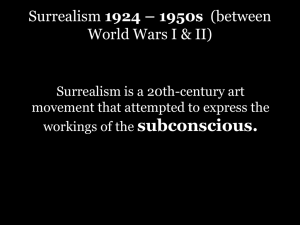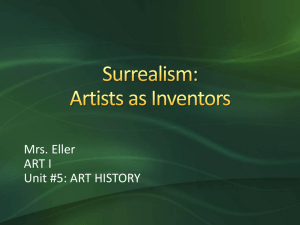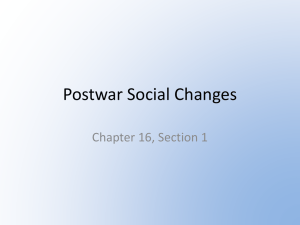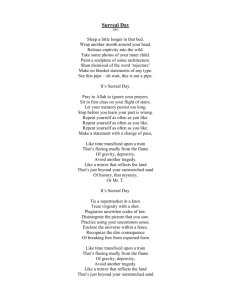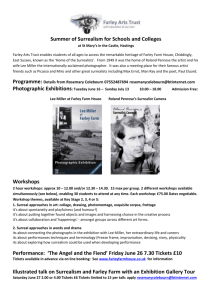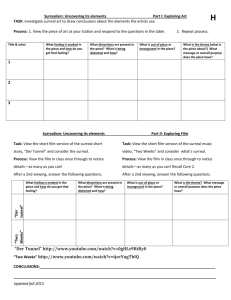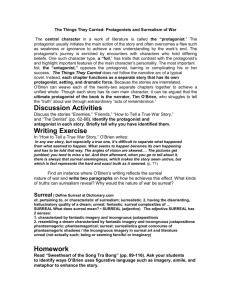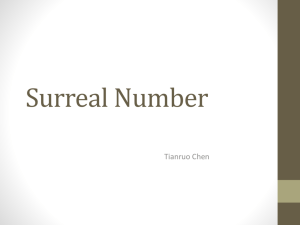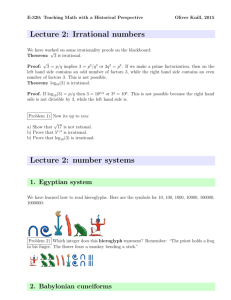Surreal Perspective Project Lesson Activity Plan
advertisement
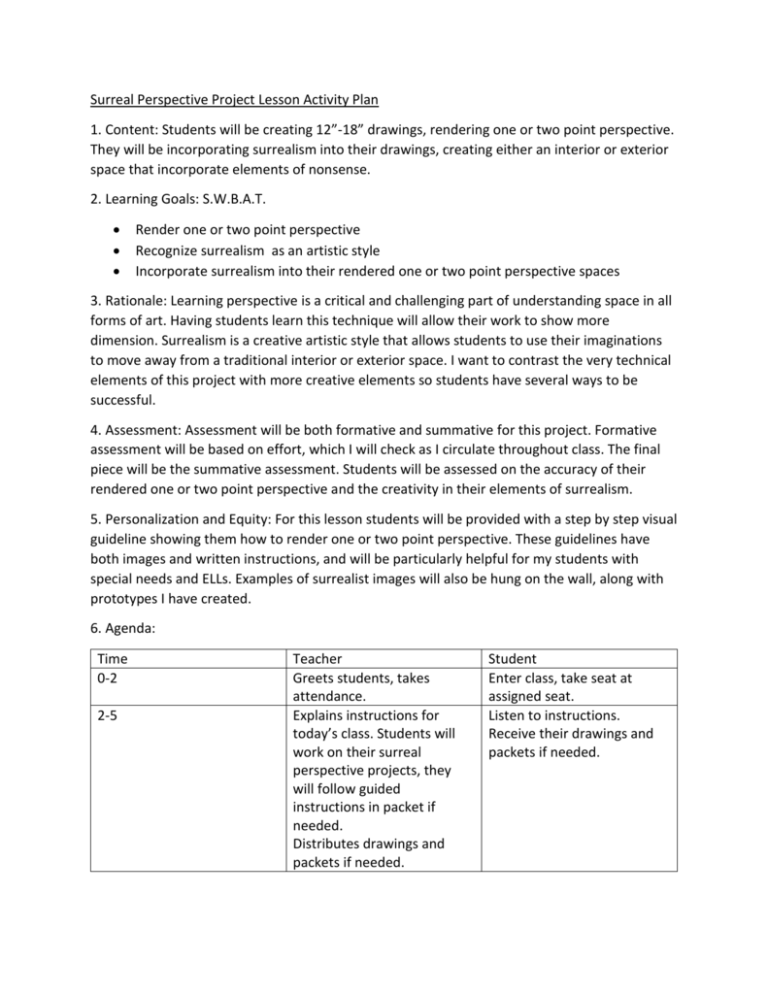
Surreal Perspective Project Lesson Activity Plan 1. Content: Students will be creating 12”-18” drawings, rendering one or two point perspective. They will be incorporating surrealism into their drawings, creating either an interior or exterior space that incorporate elements of nonsense. 2. Learning Goals: S.W.B.A.T. Render one or two point perspective Recognize surrealism as an artistic style Incorporate surrealism into their rendered one or two point perspective spaces 3. Rationale: Learning perspective is a critical and challenging part of understanding space in all forms of art. Having students learn this technique will allow their work to show more dimension. Surrealism is a creative artistic style that allows students to use their imaginations to move away from a traditional interior or exterior space. I want to contrast the very technical elements of this project with more creative elements so students have several ways to be successful. 4. Assessment: Assessment will be both formative and summative for this project. Formative assessment will be based on effort, which I will check as I circulate throughout class. The final piece will be the summative assessment. Students will be assessed on the accuracy of their rendered one or two point perspective and the creativity in their elements of surrealism. 5. Personalization and Equity: For this lesson students will be provided with a step by step visual guideline showing them how to render one or two point perspective. These guidelines have both images and written instructions, and will be particularly helpful for my students with special needs and ELLs. Examples of surrealist images will also be hung on the wall, along with prototypes I have created. 6. Agenda: Time 0-2 2-5 Teacher Greets students, takes attendance. Explains instructions for today’s class. Students will work on their surreal perspective projects, they will follow guided instructions in packet if needed. Distributes drawings and packets if needed. Student Enter class, take seat at assigned seat. Listen to instructions. Receive their drawings and packets if needed. 5-45 Circulates class to help students. Asks students to help each other on technical rendering. 45-47 Asks students to pass in their drawings and packets. Put away rulers and pencils. Work on surreal perspective projects, using packet as a guide if needed, asking teacher for help, and consulting reference pictures if needed. Pass in their drawings and packets. Put away rulers and pencils. 7. Standards: 1.9 Demonstrate the ability to create 2D and 3D works that show knowledge of unique characteristics of particular media, materials, and tools. 2.14 Review systems of visualizing information and depicting space and volume, for example, scale and vanishing point, linear, atmospheric, and isometric perspective; and create works using these systems. 2.15 Create artwork that demonstrates understanding of the elements and principles of design in establishing a point of view, a sense of space, or a mood. 8. Reflections: If I were to teach this project again, I would ensure that students were very comfortable with how to render perspective before starting their final. More than any other project this year, students needed assistance at all steps of their drawing. This was something I had not anticipated. In the classroom, I had to make a list of students who needed help so that I could check-in with everyone. To avoid this in future years, I would have students be much more thorough in their process work. All students would have to complete a sketch of a space (one or two point perspective) which incorporates the surreal aspects they would like to use on their final. Students would have their surreal brainstorming sheets readily available to give the more ideas. I found that students did not use these sheets after the one day brainstorm. I would make sure that the surreal brainstorm packet was attached to the perspective packet and I would make sure to hand out each packet at the beginning of class with their project. I would then emphasize that students had to check in with their packets for help with perspective or surrealism before they asked me. Because students needed so much help throughout this project, if I were to assign this again, I would give each student a buddy. Students would have to check in with their buddies for help before they asked me. This system would also promote a classroom community where students teach students.
